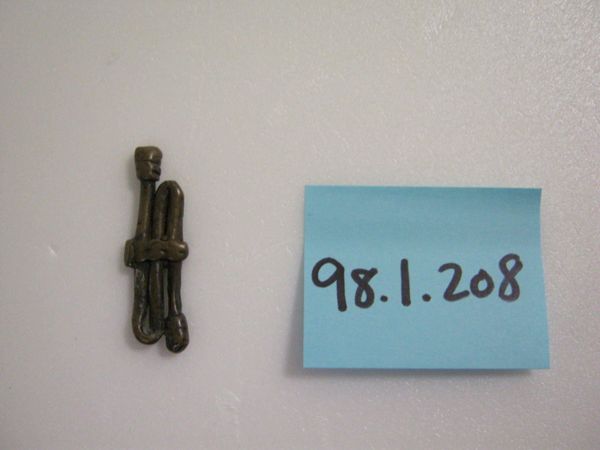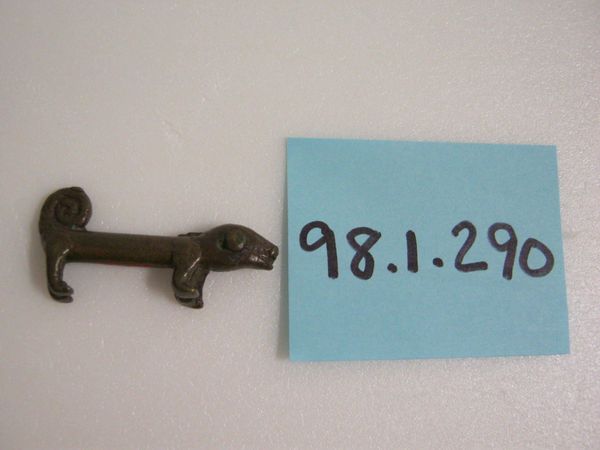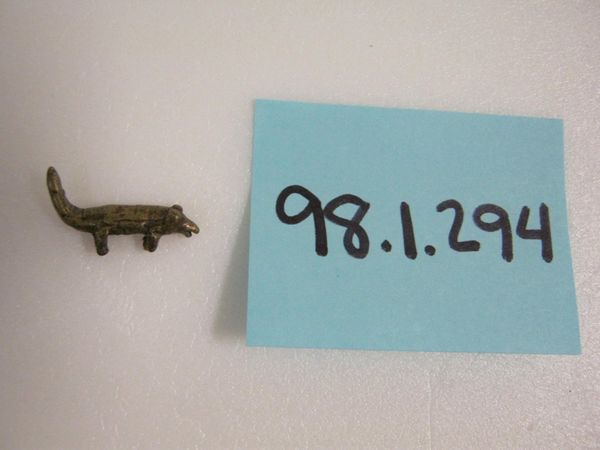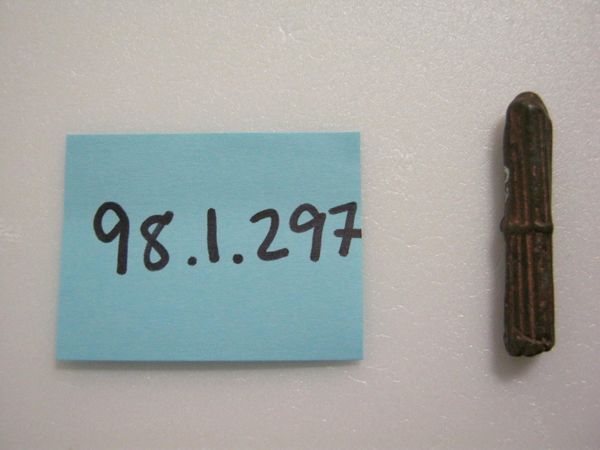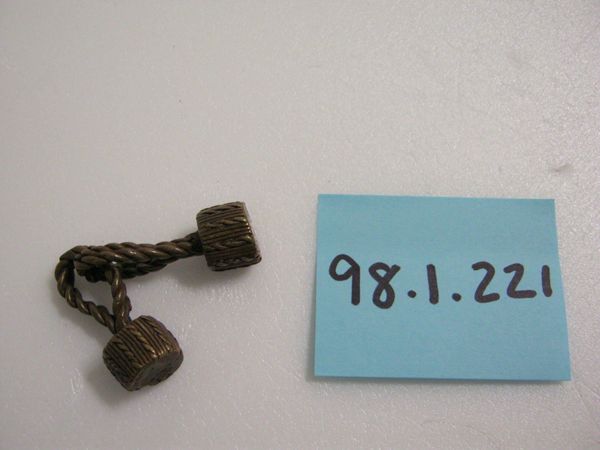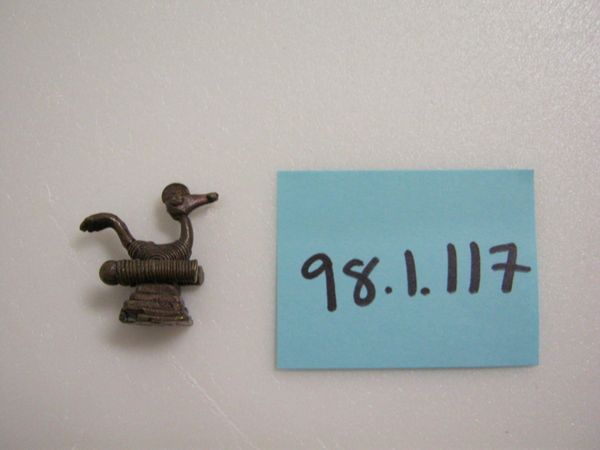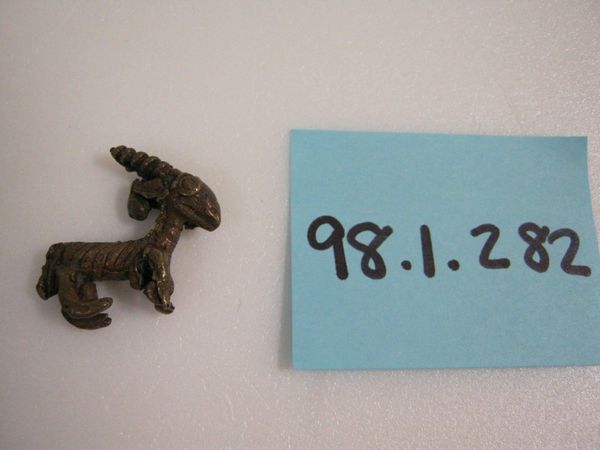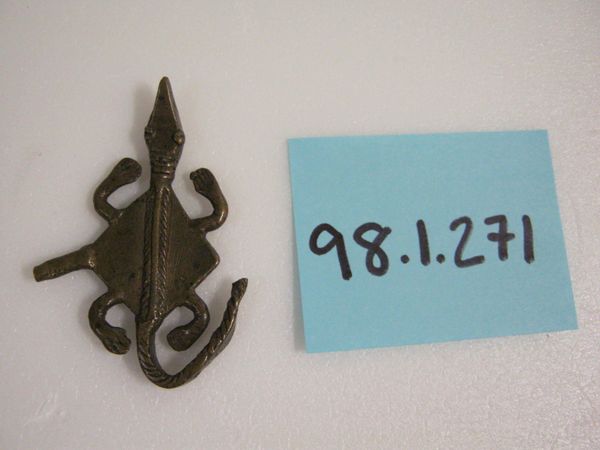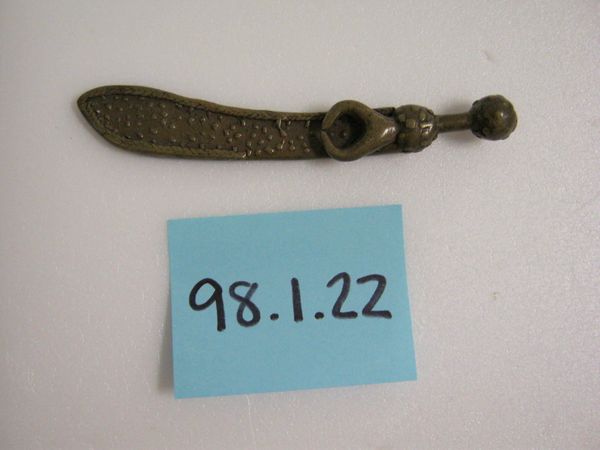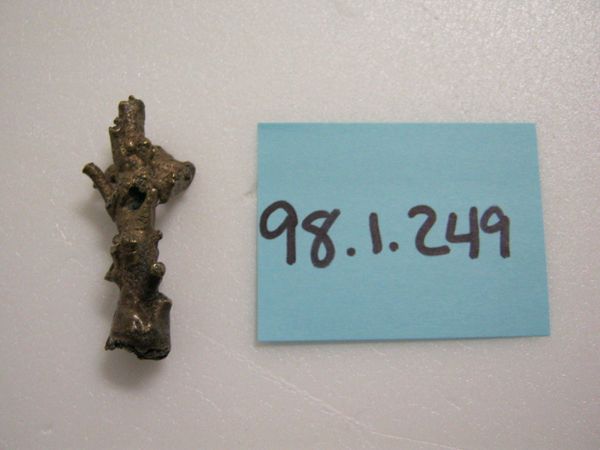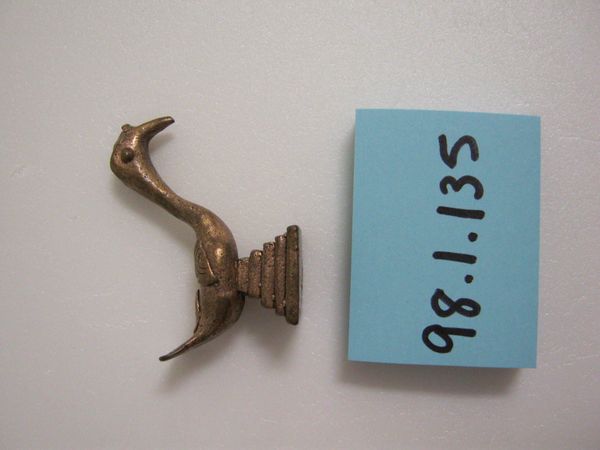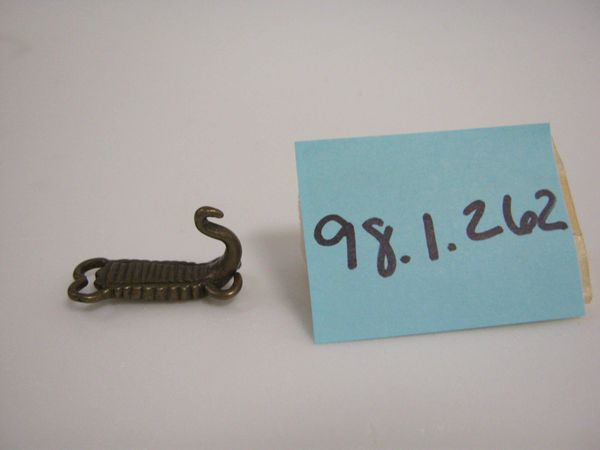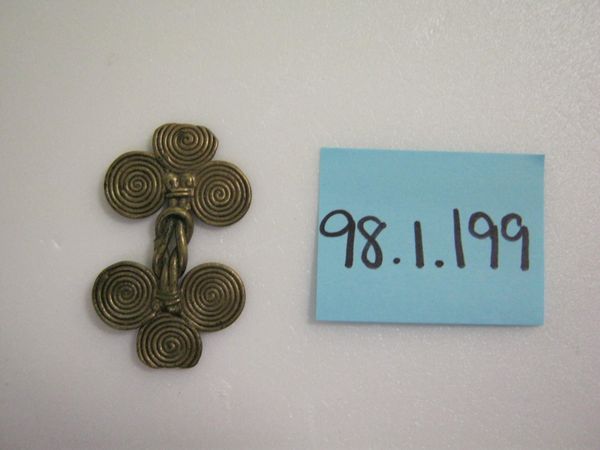![Goldweight [Knot] by Akan](/_next/image?url=https%3A%2F%2Fd2w8kbdekdi1gv.cloudfront.net%2FeyJidWNrZXQiOiAiYXJ0ZXJhLWltYWdlcy1idWNrZXQiLCAia2V5IjogImFydHdvcmtzL2ZiZjJmNzlmLTdiN2ItNDllYi05NTZiLThjOWE0ZmY2NDJkZi9mYmYyZjc5Zi03YjdiLTQ5ZWItOTU2Yi04YzlhNGZmNjQyZGZfZnVsbC5qcGciLCAiZWRpdHMiOiB7InJlc2l6ZSI6IHsid2lkdGgiOiAxOTIwLCAiaGVpZ2h0IjogMTkyMCwgImZpdCI6ICJpbnNpZGUifX19&w=3840&q=75)
brass, carving, gold, sculpture
brass
carving
gold
form
sculpture
Dimensions: 1 7/16 x 3/8 x 3/16 in. (3.65 x 0.95 x 0.48 cm)
Copyright: Public Domain
Curator: Looking at this object, I'm immediately struck by a sense of restrained energy. It feels like a story waiting to unravel. Editor: You're absolutely right, there’s a certain tension to it. What we're observing is an Akan goldweight from the 19th or 20th century, specifically shaped like a knot, residing here at the Minneapolis Institute of Art. These weights, often crafted from brass using the lost-wax casting technique, were essential tools in the everyday commerce of the Akan people. Curator: A knot... such a simple form carrying so much symbolic weight. I wonder, does the knot itself hold a particular meaning in Akan culture? Beyond just being a functional weight, what stories does it tell? Editor: Indeed. The knot, as a visual motif, is multilayered. It signifies interconnectedness, a reminder that nothing exists in isolation. These weren't merely weights; they were proverbs rendered in miniature, teaching ethical business practices, social values, and philosophical insights. Think of it as visual literacy. Curator: Ah, I see! So, a merchant using this weight wouldn't just be measuring gold; they'd be engaging in a symbolic act, reaffirming principles of trust and reciprocity. The object becomes a silent negotiator, mediating more than just quantity. There’s a clever sort of philosophy embedded in the casting of this weight. Editor: Precisely. And this gets to the very heart of Akan culture – the inextricable link between the material and the spiritual. Every detail, the casting itself, the weight, the form, speaks volumes. They acted as mnemonic devices, almost like visual proverbs to guide the Akan in their commercial and spiritual practices. The museums are able to provide insights into the broader contexts of socio-cultural practices. Curator: To think, such an everyday object could hold so much depth! It certainly urges us to think of everyday artifacts as potentially profound embodiments of meaning. The piece is like a dense, material metaphor. Editor: And metaphors which can tell complex socio-economic histories. It reminds us that objects, especially in museums, are testaments to diverse histories that are often intertwined with belief and human intention. Curator: So, next time you're tying a knot, remember this little sculpture and its potent message. Editor: And remember how something as simple as trade could carry such a wealth of meaning.
Comments
No comments
Be the first to comment and join the conversation on the ultimate creative platform.
